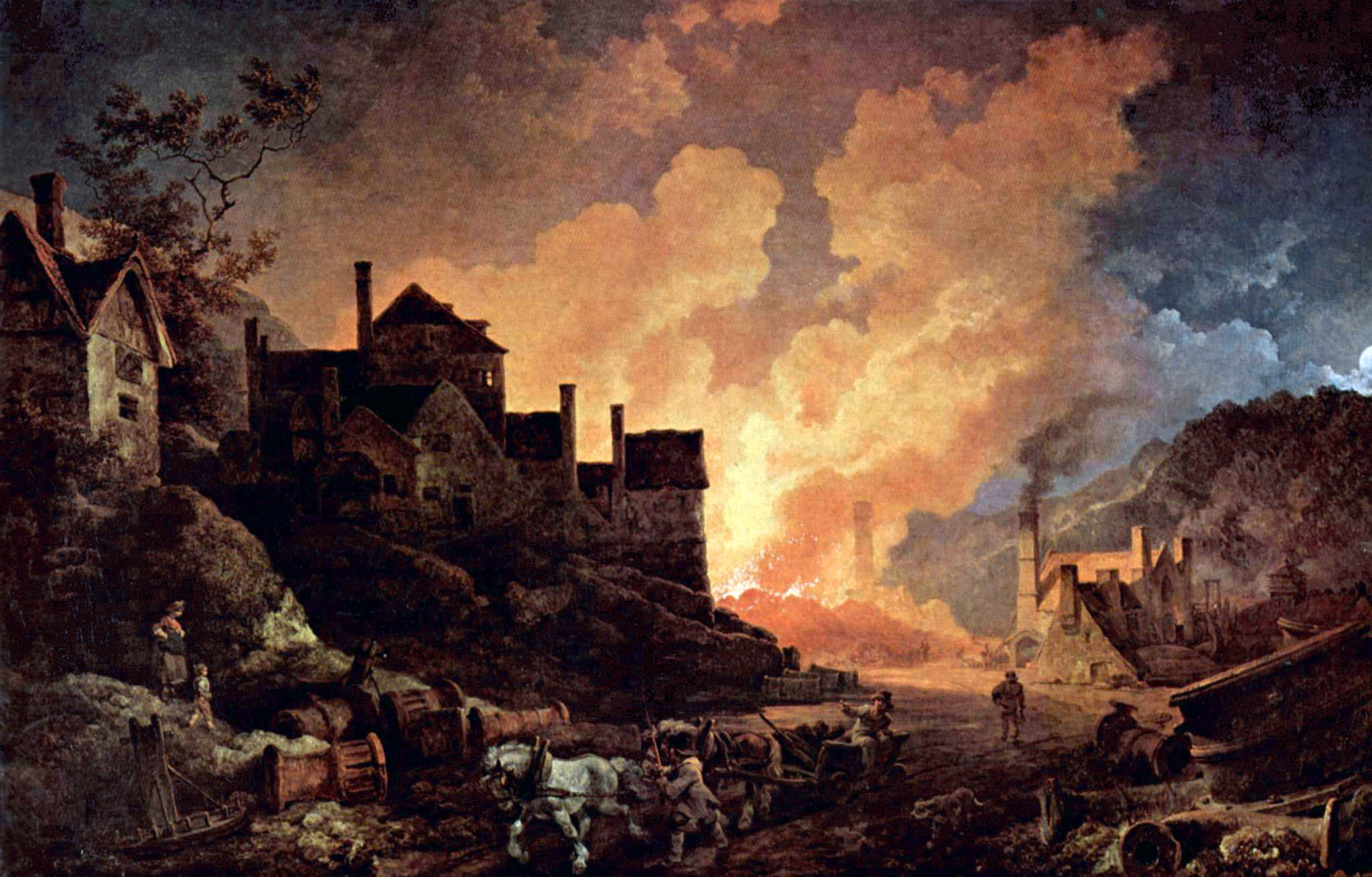 |
| Coalbrookdale by Night by Philip James de Loutherbourg. Madeley Wood Furnaces in the back. Image from Wikipedia. |
We examine how susceptible jobs are to computerisation. To assess this, we begin by implementing a novel methodology to estimate the probability of computerisation for 702 detailed occupations, using a Gaussian process classifier. Based on these estimates, we examine expected impacts of future computerisation on US labour market outcomes, with the primary objective of analysing the number of jobs at risk and the relationship between an occupation’s probability of computerisation, wages and educational attainment. According to our estimates, about 47 percent of total US employment is at risk. - all excerpts from The Future Of Employment: How Susceptible Are Jobs To Computerisation by Frey and Osborne unless otherwise noted
Of course, some would argue that automation has been a constant threat to jobs ever since the industrial revolution. Indeed it has. However, the speed and scope of what I would call the second industrial revolution, is set to decimate more jobs faster and take with it more occupations than the previous revolution.
Our model predicts that most workers in transportation and logistics occupations, together with the bulk of office and administrative support workers, and labour in production occupations, are at risk. These findings are consistent with recent technological developments documented in the literature. More surprisingly, we find that a substantial share of employment in service occupations, where most US job growth has occurred over the past decades, are highly susceptible to computerisation.
Although legislation is still being drawn up for allowing the use of self-driving vehicles on public roads, there are no such constraints on public property. Tesla made it to the front page of every technology website with the self driving capabilities of the new, modified, model S, that could drive itself home with no input from the driver. Rio Tinto, the Australian mining giant, is already using self-driving trucks in its mines, because they are faster, safer, more reliable (they're never late), more fuel efficient, and don't require sleep. Self-driving trucks and cars are set to transform transportation forever, and that will happen within the next decade or two. Even educated office workers are set to feel the pressure. Big law firms already rely on machines during the process of discovery. Machines are methodical, accurate and they never tire.
According to one estimate, moving from human to digital labor during the discovery process could let one lawyer do the work of 500. /.../ Herr used e-discovery software to reanalyze work his company’s lawyers did in the 1980s and ’90s. His human colleagues had been only 60 percent accurate, he found. “Think about how much money had been spent to be slightly better than a coin toss,” he said. - excerpt from Race Against the Machine
There are plenty more examples of occupations that are under threat and you can read about it in the paper. However, the authors note that occupations that require years of training and creative thinking skills are still too far away from being automated: lawyers, engineers, health professionals, managers and some service occupations.
For workers to win the race, however, they will have to acquire creative and social skills.
And that is the Achilles' heel. The changes mentioned in Frey and Osborne's paper are set to take place in the next decade or two. Already the United States has seen a relatively slow job market recovery and that has, to a large extent, been credited to the increasing use of machines and robots which decreases the demand for low-skilled labor. At the same time there seems to be a shortage of engineers and programmers, the sort of people that can do things that machines can't. There is a skills mismatch and it shows up in income equality and unemployment figures. Only education can bridge that gap. However, the pace of advances in robotics and machinery seem to outpace that of human capital accumulation, which means that humans are set to play catch-up with machines for the foreseeable future. To avoid calls for socialist redistribution policies that do nothing to advance the condition of the newly unemployable, policies and incentives have to be put in place that keep the rise in labor quality in line with market demand for such labor.
No comments:
Post a Comment